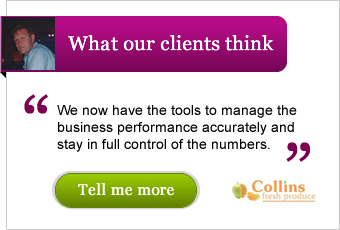There are lots of confusing sounding acronyms bandied about when it comes to accounting ratios – ROCE, ROI, ROA, EPS, P/E , etc.
What do they all mean, and can they give us the inside track into a company’s set of accounts or, for that matter, any insight into our own profit and loss or balance sheet?
The usual complaint about ratios is that they are based on historical data, and so may not be predictive. They need to be calculated on a uniform basis, from uniform data, otherwise comparisons can be misleading. Also, seasonal trends may have a distorting effect, i.e.stocks may be low after Christmas, debtors may be unusually high, or margins may be particularly low following end of season sales.
Here at FAB Towers, when Julie and I analyse the monthly management accounts for our sole trader or SME clients,there are probably only a handful of key ratios we look at:-
|
TYPE OF RATIO
|
RATIO
|
CALCULATION
|
|
Profitability
|
Gross Margin
|
Sales (minus direct costs) x 100%
Sales Turnover
|
|
Profitability
|
Net Margin
|
Profit before interest & tax x 100%
Sales Turnover
|
|
Liquidity
|
Quick Ratio (Acid Test)
|
Current Assets (minus stock)
Current Liabilities
|
|
Liquidity
|
Debtor days
|
Trade Debtors x 365 days
Sales Turnover
|
|
Profitability
|
ROCE (Return on capital employed)
|
Profit before interest & tax x 100%
Total assets less current liabilities
|
By and large, the profitability ratios are used as a basis for assessing the performance of a company and its managers, including the efficiency of its asset usage .
The main reason for looking at the gross margin on a regular basis is to monitor it against budget.What did we expect it to be?If the gross margin is lower than expected, it could be we had to drop our price to maintain sales volumes or we had to pay more for our direct labour, or direct materials. A couple of our clients import from overseas so any wrong way currency fluctuations will directly affect this figure. Equally, any increase in the sales price will have a positive effect here.
Any increase or decrease in the gross margin will have a knock-on effect on the net margin. What we are looking for here is to see that our overheads and fixed costs were as expected with no surprises and that any variable costs are in line with the achieved turnover.
We look at liquidity ratios to see whether the company has the cash available to meet its payments as they fall due. We tend to use the quick ratio, which uses debtors and cash figures only, and not stock.This ratio tells us how much of the company’s short term debt can be met. A ratio of less than one means a company will struggle to meet its immediate obligations, whilst a value over 2.0 generally indicates no short-term trading problem. This ratio is also called the acid-test ratio.
The debtor day ratio is a key calculation, especially in today’s economic climate with business failures on the increase and people generally trying to stretch out their own cash. Any increase should be investigated to make sure there is nothing sinister happening. While it may be necessary in some instances to increase terms offered to customers, if your stated payment terms are 30 days and your debtor days are 60, it means you are not collecting you debts quickly enough.
We probably would not look at the ROCE on a monthly basis, as it is more usual to use the year end figure for capital employed when calculating this ratio. One of the criticisms of the ROCE calculation is that is uses the book value of the assets from the balance sheet, so that ROCE will increase as the assets depreciate. By the same token, if a company has just invested heavily in new assets, the ROCE will be lower as the company has yet to reap the benefit of its new investment.
Just one more thing..
And finally, one of my favourite ratios which we use generally in preparing the annual budgets or sales forecast, is the c/s ratio.This is the ratio of contribution (gross profit) to sales.
This is a nifty little ratio which can help you calculate your break-even point.
Annual Sales Forecast:£1,000,000
Less Direct Costs:£600,000
Gross Profit (contribution)£400,000
C/S Ratio:= 0.40
£1,000,000
Forecast
Fixed Costs/Overheads £325,000
£812,500 Sales t/o required to break-even
CONCLUSION
Accounting ratios can be a useful means of identifying significant relationships between different figures.However, the financial statements will only reflect those activities which can be expressed in money terms.They do not give a complete picture of the activities of a business.











